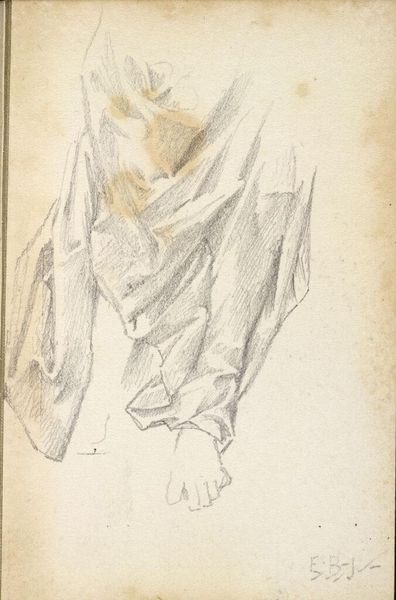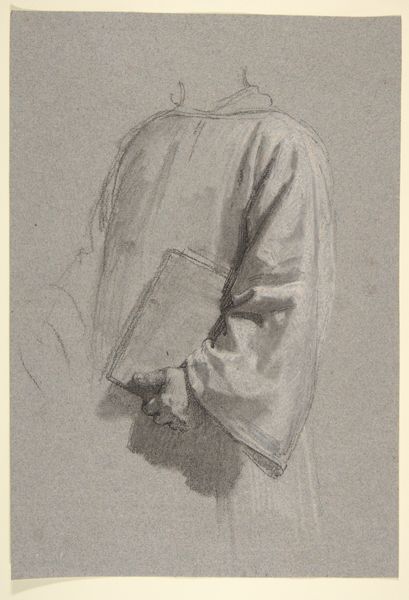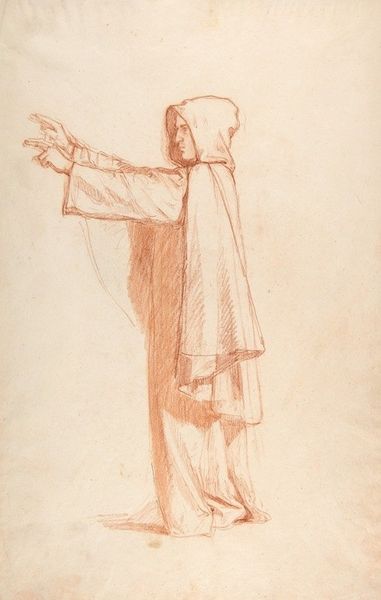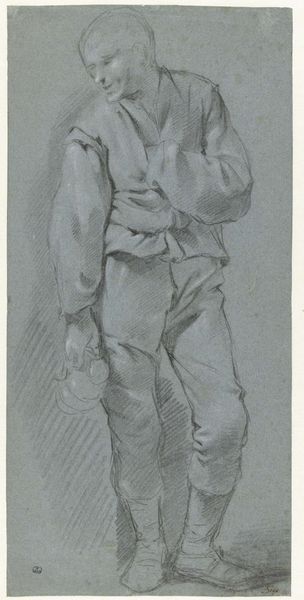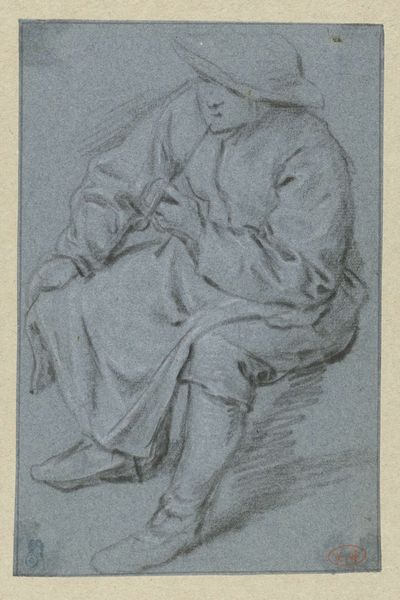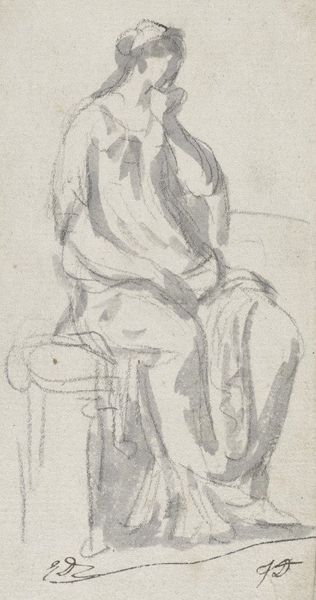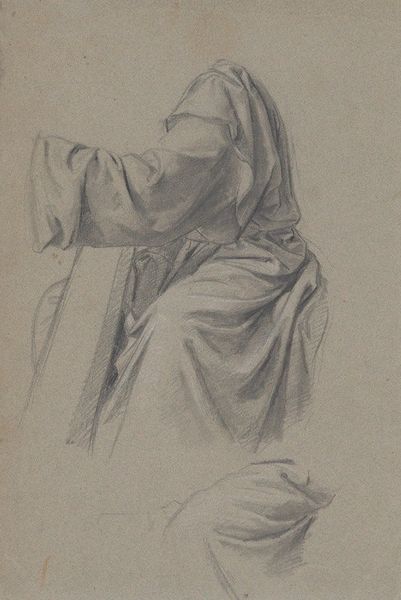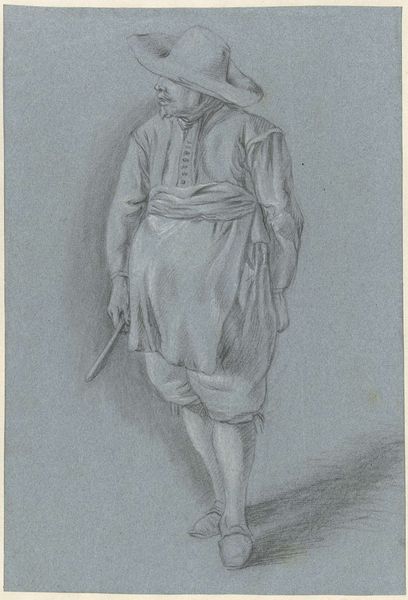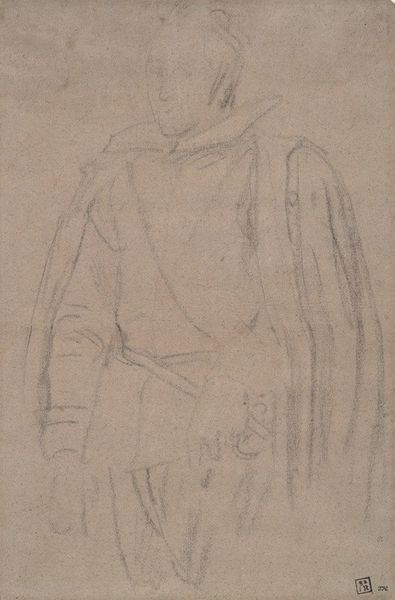
drawing
#
drawing
#
amateur sketch
#
light pencil work
#
pencil sketch
#
incomplete sketchy
#
personal sketchbook
#
idea generation sketch
#
sketchwork
#
detailed observational sketch
#
portrait drawing
#
initial sketch
Copyright: Public Domain: Artvee
Curator: This is "Buste de femme et deux études de bras droit," a drawing by Pierre Puvis de Chavannes, likely created between 1874 and 1878. Editor: There's something incredibly intimate about this work. The soft pencil strokes, the delicate shading…it feels like a stolen moment, a glimpse into the artist’s private contemplation. Curator: Indeed. I find myself thinking about the historical context surrounding academic figure drawing during this period, particularly in France. The nude was so prominent, yet here, we see a woman modestly clothed, her gaze turned inward. It could be interpreted as a subtle resistance against established norms, perhaps a commentary on the evolving roles and representation of women. Editor: Or perhaps it reflects more personally about identity. Her pose – hand to her face – what does it signify? Anxiety? Deep thought? It could even relate to power imbalances based on gender and class; a woman caught in the patriarchal gaze, struggling for agency. It makes me wonder what this figure would have thought about second-wave feminism? Curator: The sketchwork itself reveals layers of artistic decisions and institutional practices. You notice, for example, the rapid, exploratory marks, typical of an academic drawing, contrasted with the detailed focus on the hands. This detailed and incomplete nature challenges what was deemed presentable or 'finished', raising the issue about public accessibility to unfinished artistic projects. Editor: That’s interesting because I was thinking precisely that tension enhances its power. The incompleteness invites us in. It is not only incomplete in its form, but it is as if it lacks wholeness, even spiritually. The focus on details seems like a reaching for an impossible, internal standard. Curator: I can definitely see how you’re drawing those conclusions! These pieces make us think about how drawings shape artistic canons and influence viewers today. They help us re-evaluate existing ideas and narratives to show new paths of exploration. Editor: Precisely. And through such engagement we are constantly challenging power imbalances in whose narrative takes prevalence in the art world. Curator: Ultimately, it highlights the continuing need for diverse and inclusive art historical narratives, reminding us that understanding and sharing insights benefits us all.
Comments
No comments
Be the first to comment and join the conversation on the ultimate creative platform.
